How Does Military Pension Work?
Key Takeaways:
- Military pensions provide financial assistance to veterans who have served in active duty and have met certain eligibility criteria.
- Eligibility for military pensions is based on the length of service, disability retirement, and early retirement. In addition, there are different types of military pensions, such as Final Pay, High-3, and REDUX Retirement Systems.
- Military pensions are calculated based on the High-3 Year Average, Service Percent Multiplier, and Cost of Living Adjustments. Military pensions are subject to federal and state taxation, and veterans can apply for their pension online, by submitting required documents, and expect their first payment within a certain timeframe.
Struggling to understand how military pensions work? You’re not alone! For service members and their families, unraveling the complexities of a military pension can be daunting. Discover the answers to your questions and simplify the process with this helpful guide.
Military Pension Overview
Military Pension Overview:
Military personnel who have served for a certain period are eligible for a pension upon retirement. The amount received is based on the service member’s rank, years of service, and the type of retirement plan.
If you are interested in learning about retirement plans and pensions, you can also find information about what is the UK state pension on our website.
In addition to the basic pension plan, service members may also have the option to contribute to the Thrift Savings Plan (TSP), which is a 401(k)-like retirement savings plan. The TSP is a great way to save additional funds for retirement, and contributions are matched by the government up to a certain percentage.
It is important to understand the options and eligibility requirements for military pension plans, as they can have a significant impact on one’s financial stability in retirement.
Pro Tip: If eligible, consider contributing to the Thrift Savings Plan to maximize retirement savings.
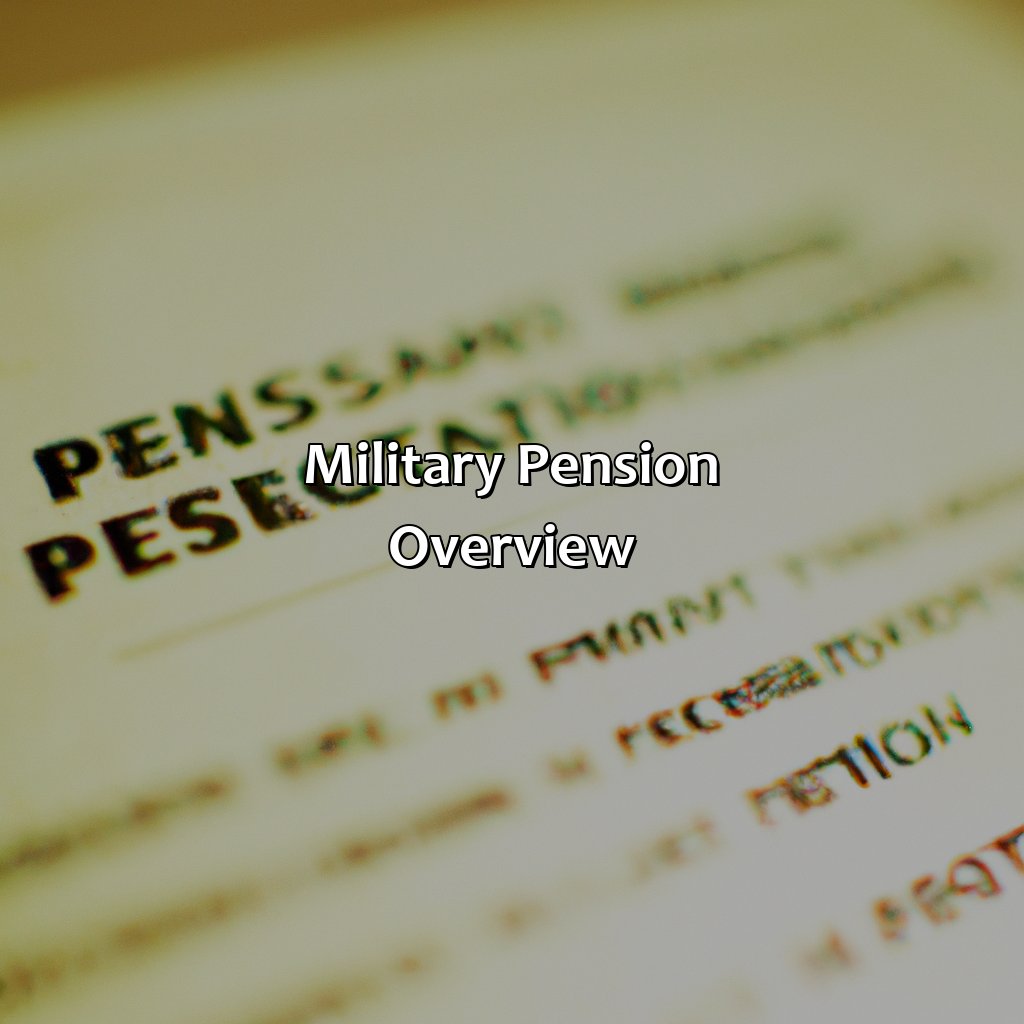
Image credits: retiregenz.com by Adam Jones
Eligibility Criteria for Military Pension
Wanna know if you’re eligible for military pension? Here’s the scoop!
- Length of service requirements? Check.
- Disability retirement eligibility? Check.
- Early retirement eligibility? Check.
All three of these sub-sections are gonna give you a good idea of what needs to be in place to obtain a military pension.
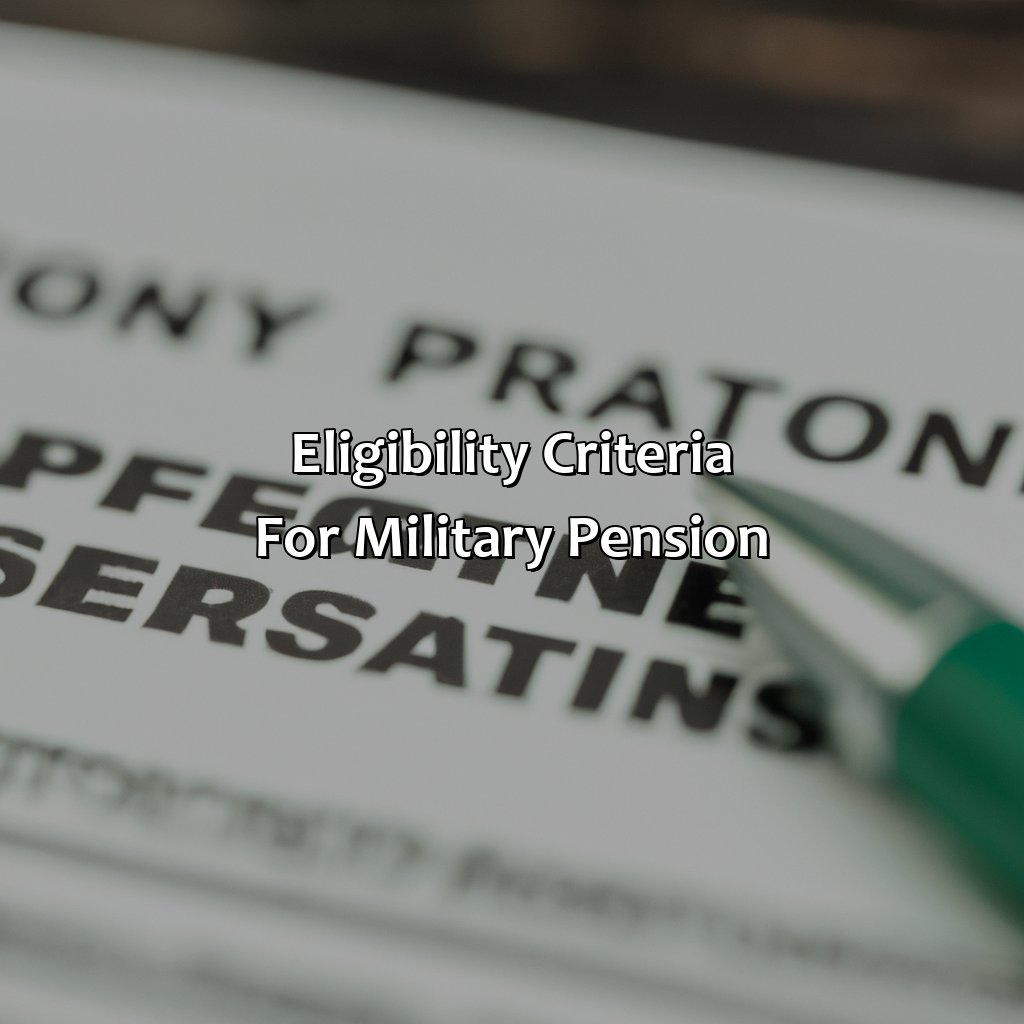
Image credits: retiregenz.com by David Jones
Length of Service Requirement
The duration of military service required to be eligible for a pension is a critical factor that every military personnel should understand. The time frame that a person must serve in the military to qualify for a pension varies based on different factors such as rank, branch of service, and date of enlistment.
In general, those who have served for at least 20 years in active duty or reserve duty are eligible to receive a pension. However, individuals who have suffered an injury or disability during their service may qualify for benefits with fewer than 20 years of service.
It’s important to note that the length of service required varies based on several criteria. For example, Individuals who entered the military after September 7th, 1980, must serve at least five years before being eligible for retirement benefits. Also, those in the National Guard and Reserves must have completed at least 20 ‘qualified’ years of service in order to receive a pension.
Overall, it is essential to understand the specific details of your pension eligibility based on your branch of service and circumstances.
A former Airforce officer named John shared his story while seeking advice regarding his eligibility requirements. Despite completing his required period of active-duty service, he was unsure if he had fulfilled other requirements such as reserve duty and training time before leaving the Airforce. To learn more about EE pension, check out our website.
Who needs a working body when you can retire with disability and get paid for it?
Disability Retirement Eligibility
Individuals who meet the criteria for disability retirement from the military can receive benefits to support them in their daily lives. The eligibility requirements for disability retirement differ based on various factors, including the length of service and type of disability. To qualify, individuals must have a service-connected chronic illness or injury that renders them unable to perform their military duties. Additionally, they should not have undergone a uniformed service separation due to misconduct or bad behavior.
Benefits are awarded based on the level of disability and can include monthly payments, medical care, and other resources to help offset expenses related to their condition. Veterans may also be eligible for additional compensation if they require assistance with personal care or household activities.
It is important to note that veterans who were dishonorably discharged from service are not eligible for any disability retirement benefits.
According to Military.com, “veterans with service-connected disabilities of 10% or more are usually allowed entrance into the base exchange and commissary system“. If you’re wondering about pensions, you may also be interested in learning about
Pro Tip: It’s crucial to speak with your local Veterans Affairs office or military personnel specialist regarding your unique situation if you’re thinking about retiring from active duty earlier than initially planned rather than relying solely on generalized information available online or elsewhere.
Calculating military pension is like trying to decode a top-secret mission, except the only enemy you’re fighting is math.
How Military Pension is Calculated
To understand military pension calculations, you need to know several factors. These include:
- High-3 Year Average
- Service Percent Multiplier
- Cost of Living Adjustments
Let’s look at each one and its importance for your retirement benefits.
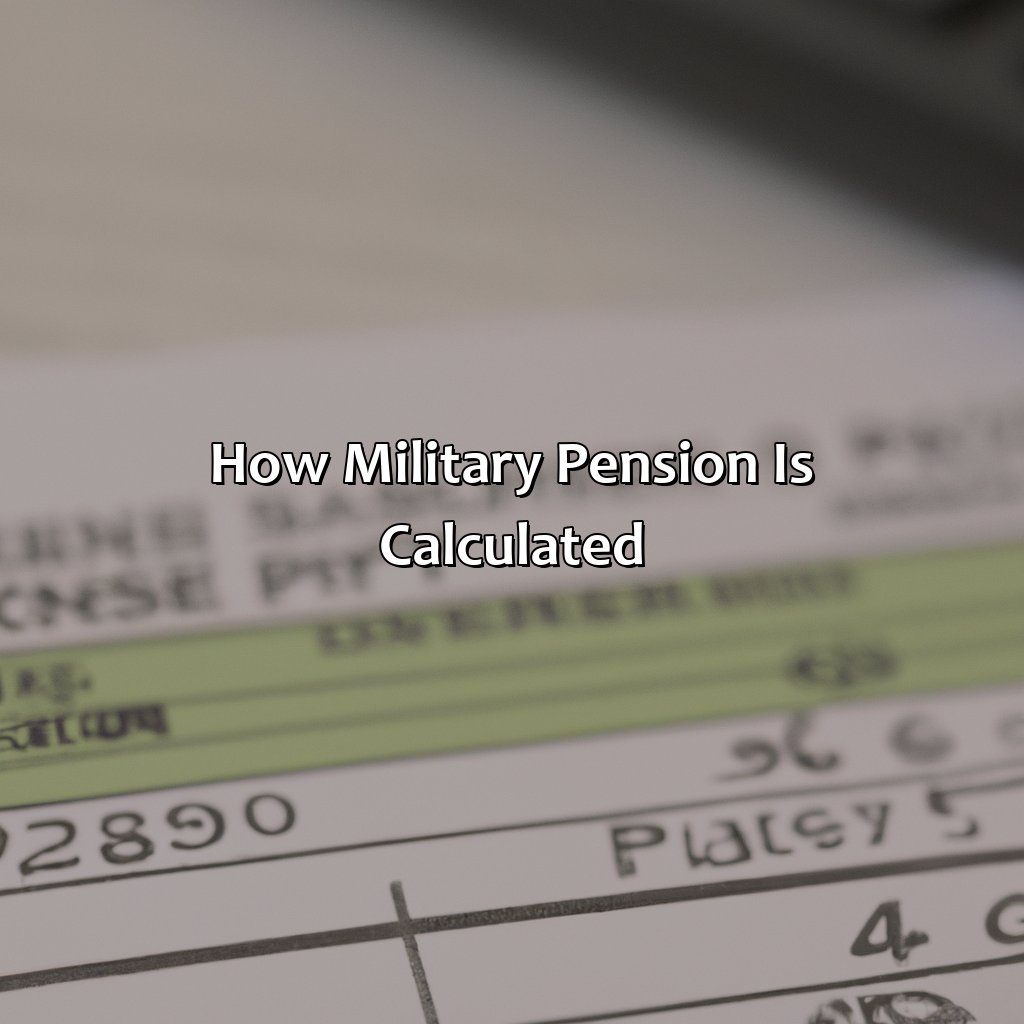
Image credits: retiregenz.com by Yuval Washington
High-3 Year Average
Calculating military pension involves looking at the service member’s rank, years of service, and a specific calculation known as the High-3 Year Average. This refers to the average salary earned by the military member over their highest-paid three-year period of service. It is used as a basis for determining retirement pay.
The High-3 Year Average is calculated by taking the average of the three highest years of base pay that a service member received during their career. This is then multiplied by a percentage based on their years of service, with a maximum percentage of 75% after 30 years of service. For example, if someone retired after 20 years and had a high-3 average salary of $60,000 per year, they would receive approximately $30,000 per year in retirement pay (50% of their high-3).
It should be noted that this does not include additional allowances or bonuses received during these three years. The High-3 Year Average is purely based on base pay.
Military pensions are an essential part of ensuring military members have financial stability during retirement. According to Military.com, veterans account for about one-third of all federal spending on pensions and benefits.
If you want to know more about what is pension scheme, you can check out this link.
Your years of service may have felt like an eternity, but at least they’ll count for something thanks to the service percent multiplier.
Service Percent Multiplier
After years of loyal service, one’s military pension is calculated using a ‘Multiplier’ which represents a percentage of the Final Basic Pay. The Multipliers table is shown below:
| Years of Service | Multiplier (%) |
| Less than 20 | 2.5% |
| 20 or more, but less than 27 | 2.75% |
| 27 or more, but less than 30 | 3.00% |
| 30 or more, but less than 33 | 3.25% |
| 33 or more | 3.50% |
It is important to note that the Service Percent Multiplier increased by .025% for each year you serve beyond the first twenty years. Military personnel with fewer years of service will have their pension calculated based on their Final Basic Pay and the Multiplier at that time, while those who complete more than twenty years in service will continue to see their Multiplier increase annually until they retire or separate. Don’t wait until it’s too late! Your Military Pension is an essential part of your future financial plan; ensure you understand how it works and what you need to do to maximize its benefits upon retirement from military service. Even military pensions have to keep up with the ever-increasing price of avocados.
Cost of Living Adjustments
Every year, the military pension amount is adjusted to match the current cost of living. This adjustment is known as a “Cost of Living Allowance” or COLA. The COLA percentage is based on the change in the Consumer Price Index (CPI) for urban wage earners and clerical workers.
The CPI measures changes in prices paid for goods and services used by households. If there is a rise in prices, then the COLA will increase accordingly. Conversely, if there is no increase in prices, then there will be no adjustment made.
It is important to note that once you start receiving military retirement pay, your COLA will never decrease even if prices remain stagnant or decrease.
One interesting fact to note is that in 2021, due to the economic strain caused by COVID-19, military retirees did not receive a COLA as there was no increase in CPI from one year to another.
Whether you’re retired, disabled, or a surviving spouse, the military’s got a pension plan for you (and no, it doesn’t involve jumping out of airplanes).
Types of Military Pensions
Gain knowledge of the Final Pay Retirement System, High-3 Retirement System, and REDUX Retirement System to comprehend the different types of military pensions. Each has distinct pros and cons. So, to make a wise choice with your military retirement benefits, it is essential to be informed of the distinctions.

Image credits: retiregenz.com by Harry Arnold
Final Pay Retirement System
The Final Compensation Retirement System has played a significant role in providing retirement benefits for military personnel. This retirement system calculates the pension amount based on the last salary drawn by the service member before retiring. The higher the salary, the higher the pension payout.
Service members who served for more than 20 years qualify for this program. The method of calculating pensions varies depending upon rank, length of service and period of active duty. Moreover, US Congress regularly adjusts pay charts to keep pace with inflation thereby ensuring adequate retirement benefits.
One interesting fact is that service members are not required to contribute towards their pension fund unlike in civilian jobs. As a result, upon retirement, they receive pension payments from their first day of full-time retirement. If you want to learn more about what is ER pension, you can check out this website.
For those who are a part of this program, ignoring or postponing planning activities for retirement can lead to a bleak future. It is advisable to seek professional advice and develop an action plan regarding post-military career plans and financial goals ensuring one’s family’s future security too.
Retiring on a High-3 sounds like a promising career move for both military personnel and stoners alike.
High-3 Retirement System
The High-3 Retirement System is a military pension plan that calculates retirement pay based on the average of an individual’s highest three years of basic pay. This system benefits individuals who have served for at least 20 years and offers predictable retirement income.
In addition to basic pay, service members may also receive other forms of compensation, such as bonuses, allowances, and special pays. However, only basic pay factors into the calculation of retirement benefits under the High-3 Retirement System.
It is important to note that there are other types of military pensions available, including the Final Pay Retirement System and the REDUX Retirement System. Individuals should carefully consider each option before making a decision.
As with any retirement plan, it is essential to start planning early and seek professional guidance. Don’t miss out on the benefits that can be obtained through proper planning and utilization of pension funds offered by the military.
Consider your options carefully to ensure you make the most of your hard-earned benefits as a member of our armed forces.
Why settle for a normal retirement when you can experience the thrill of choosing between a smaller pension now or a much, much smaller pension later?
REDUX Retirement System
The Redux pension system is a variant of the military retirement plan. It is designed for those who enlisted after August 1, 1986, and provides a smaller monthly annuity than the high-3 retirement system. The plan has a one-time payment option that can be taken at age 62. It includes an annual cost-of-living adjustment (COLA).
If you are eligible for the Redux retirement system, there are few things you should consider before choosing it:
- A reduction in annuity payments occurs after 30 years of service.
- The lump sum payment option also significantly reduces monthly payments in the long run.
It’s important to note that if you plan to work after retiring from the military, the high-3 plan may be more beneficial. Also, consider your long-term financial goals before making any decisions. Overall, choose wisely as it will have significant impacts on your entire post-military career. Looks like even in retirement, the military still knows how to take a tax bite out of your wallet.
Military Pension and Taxes
To get a clue about military pensions and taxes, explore the world of federal and state taxation. These two areas will show you how military pensions operate. Voila! Problem solved.
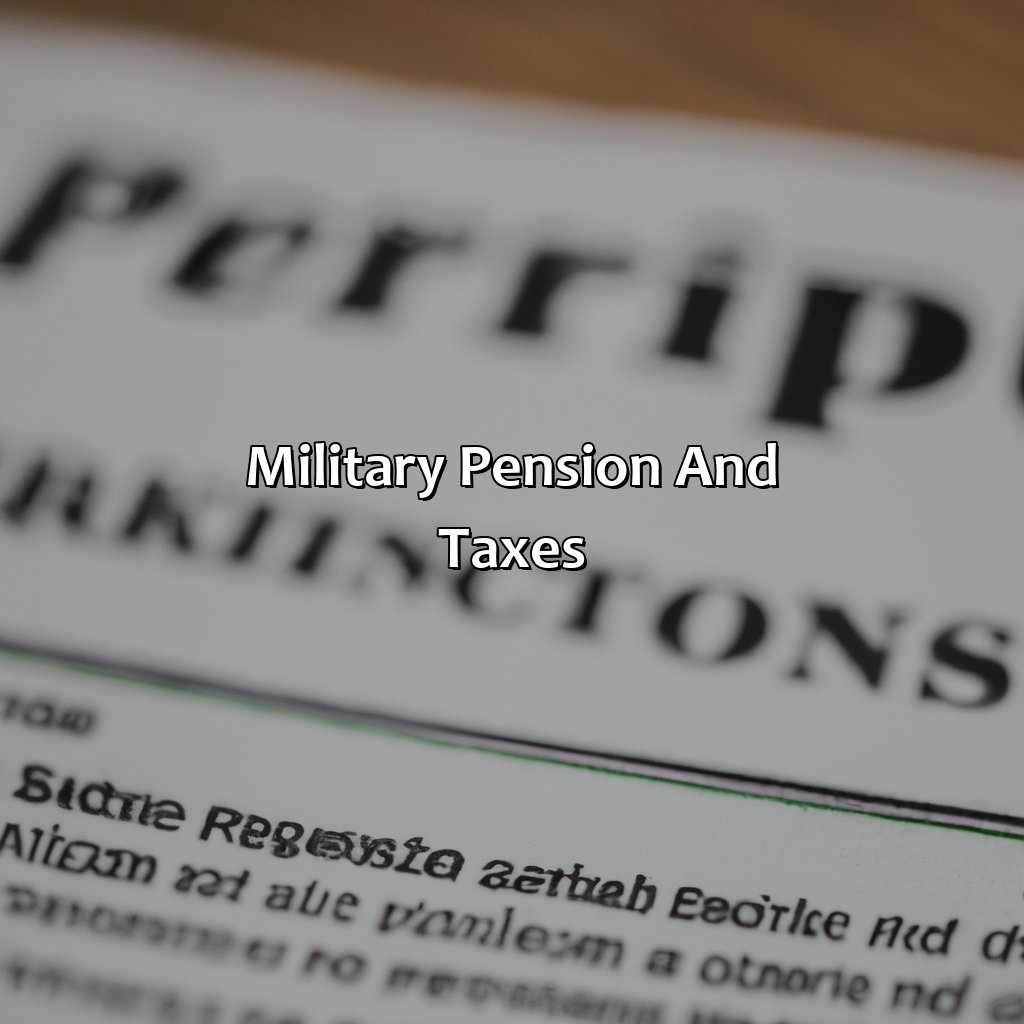
Image credits: retiregenz.com by Joel Jones
Federal Taxation of Military Pensions
When it comes to military pensions, many people wonder about the federal taxation of such incomes. Military pension income is generally taxable for federal purposes, and specific rules determine how much you owe.
The amount of tax you owe on your military retirement pay depends on a variety of factors. Your age, the source of your military retirement income, and whether or not you have any disabilities can all affect how much you ll pay in taxes.
It’s essential to know that certain forms of compensation or benefits will not count as part of your taxable income. For instance, if you received combat-related injuries, these amounts will usually be tax-free.
Don’t miss out on important details when it comes to obtaining full financial benefits from your military pension. Knowledge is power and understanding the ins and outs of your benefits will help you secure a better future. Wondering what a TPI pension is and how it works? Make sure to do your research and consult with a financial advisor to fully understand your options.
Looks like even retired soldiers can’t escape death and taxes – they just have to deal with state taxes instead.
State Taxation of Military Pensions
State tax laws on military retirement payments differ as each state has its own set of regulations. Some states may not tax any portion of these pensions, while others do but at a reduced rate for those over a certain age. Some states require the pension to be taxed as regular income and others base it on the amount received from the federal government.
The taxable amount may also depend on whether retirement benefits are derived solely from military service or a combination of different types of employment. Moreover, some states offer deductions to retired military personnel based on factors such as age, income level, and disability rating. If you are wondering what is Category A State Retirement Pension, you may want to look into these state-specific details.
Additionally, some states impose taxes on survivor benefits and VA disability compensation. It is essential to check state-specific regulations because the federal law does not extend tax exemption or reductions by default.
According to Military.com, 16 states exempt all or part of military pensions from taxes.
Learn more about what is S pension and how it works for military personnel after retirement.
Retiring from the military is like hitting the jackpot, except you have to wait a few years to collect and there’s no tax-free option.
Applying for Military Pension
Apply for military pension made easy! There are multiple ways.
- Go online
- Submit documents
Before applying, get your discharge papers and service history ready. After you apply, the time you wait for the first payment may vary. Factors play a role.
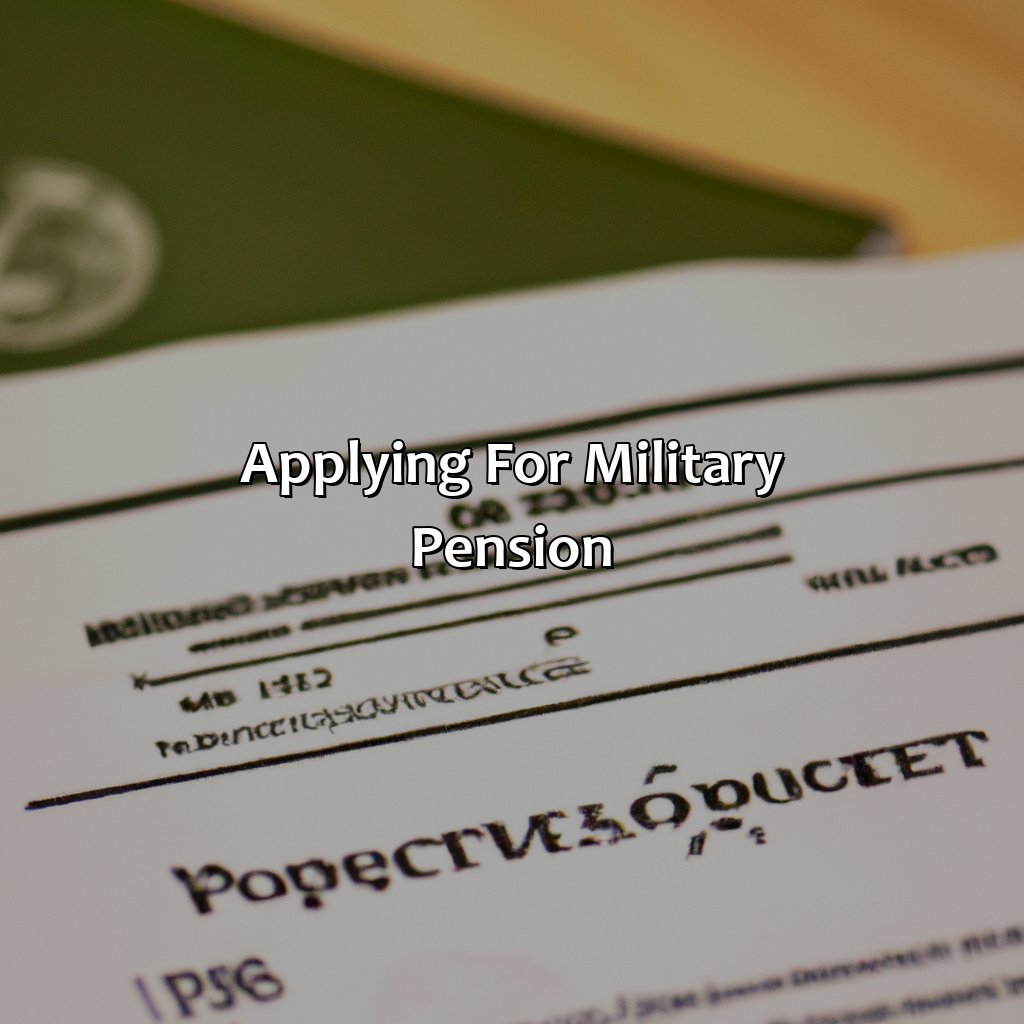
Image credits: retiregenz.com by Joel Duncun
Applying for Military Pension Online
The process of accessing Military Pension online can be overwhelming for many. However, it is a simple and straightforward procedure that requires following all the necessary steps. To start, visit the official government website and fill out the pension application form by providing all the required details.
After submitting your application, you will receive a confirmation message indicating that your submission has been received. You should then wait for a response from the relevant branch that checks to ensure that your application is complete and all the information you provided is valid. If you have any questions about ERS pension on your payslip, you can refer to our detailed guide.
Once approved, you will start receiving monthly pension payments, which may vary depending on your length of service and rank in the military. Additionally, factors such as inflation and cost-of-living adjustments may also influence the amount paid.
To ensure timely processing of your application, make sure to provide accurate details about your military service record. It is also essential to keep in mind that documents relating to your military service, such as discharge papers or separation documents (DD-214), must be uploaded during the pension application process.
Overall, applying for Military Pension online can be an easy procedure as long as you follow all the necessary steps and provide accurate details. By doing so, you increase your chances of getting approved for monthly pension payments without any delay or issues arising later on. Get ready to do some paperwork, because applying for a military pension is like going to war with a mountain of documents.
Required Documents
To successfully apply for a Military Pension, it is essential to have all the necessary documents completed and ready for submission. Here are the required documents:
- The veteran s birth certificate or naturalization papers
- DD Form 214 (Certificate of Release or Discharge from Active Duty)
- Social Security number(s) of eligible dependents, including spouse and children
- Proof of marriage (if applicable) – Marriage Certificate
- Proof of children born to you while married to your spouse (if applicable) – Birth Certificates
- Disability rating decision letter from the VA, if disabled after service separation.
It is important to note that missing even one document can result in delays or even rejection of your pension application. Always ensure all the documents above are complete.
In addition to the required documents, some unique details must be considered. For example, if military records were destroyed in a fire at NPRC, a Standard Form (SF)180 should be filled out. Finally, ensure that all forms are filled accurately and entirely.
Missing out on any required documents can prove costly in more ways than one. It could lead to significant delays in processing claims or disqualification altogether on technical grounds. Don’t risk missing out on something as crucial as pensions make sure that every necessary document has been submitted in time!
Time Frame for Receiving First Payment.
The first payment time-frame for military pensions varies depending on the circumstances surrounding the retiree and their services.
- For those who retire after 20 years, the monthly pension amount can begin immediately after their retirement date.
- However, if they retire earlier, they are required to wait until they are 60 before receiving payments.
- For military members with disabilities resulting from service, the timeline may be shorter, as they may begin to receive monthly benefits immediately upon retirement.
It is important to note that there could be processing delays in exceptional cases. Apart from standard procedures such as submitting documents online or via mail, an in-person appointment could speed up processing times.
The bottom line is that individuals should apply for their pension as early as possible to minimize waiting periods and plan for their financial future accordingly.
Five Facts About How Military Pension Works:
- ✅ Military pensions are earned after 20 years of service or medically retired due to service-connected disability. (Source: Military)
- ✅ The pension plan is based on a formula that takes into account the member’s base pay, years of service, and age at retirement. (Source: Military Times)
- ✅ The current military retirement plan, known as the Blended Retirement System (BRS), combines a traditional pension with contributions to a Thrift Savings Plan (TSP). (Source: Military.com)
- ✅ The BRS offers automatic and matching contributions, making it possible for service members to build additional retirement savings beyond their pension. (Source: Investopedia)
- ✅ Military spouses may be eligible for a portion of the service member’s retirement pay in the event of divorce or death. (Source: Military OneSource)
FAQs about How Does Military Pension Work?
How does military pension work?
Military pensions are retirement benefits provided to eligible members of the armed forces. The pension amount is based on a set formula, including the number of years of service and final pay. Generally, service members who serve at least 20 years or more in the military are eligible for retirement benefits.
What is the eligibility criteria for military pension?
The eligibility criteria for military pension includes serving in the military for a minimum of 20 years. However, there are other pension programs available for those who serve less than 20 years, such as the temporary early retirement authority (TERA) and disability retirement.
What is the formula used to calculate the pension amount?
The formula used to calculate the pension amount includes 2.5% of the average of the highest-paid 36 months of base pay, for each year of service. For example, if a service member serves for 20 years, then their pension amount would be calculated as 50% of their average monthly base pay.
What is the Survivor Benefit Plan (SBP)?
The Survivor Benefit Plan (SBP) is a retirement plan established to provide income to survivors of retired service members. It is available for a monthly premium and provides continued support for the surviving spouse or children, even after the retiree s death.
When do military pension payments start?
Military pension payments start once the service member reaches their retirement eligibility age and chooses to retire. If someone retires before the age of 62, the pension amount is subject to reduction, but the amount increases after reaching the age of 62.
Can military pension be taxed?
Yes, military pension is taxable income. However, there are certain exemptions or deductions available to reduce the amount of taxable income, such as deductions for medical expenses and state taxes.


